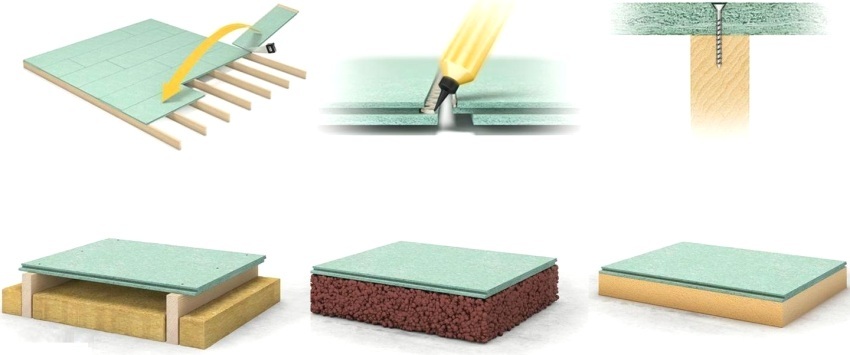Content
- What is a self-tapping screw
- Differences of screws for GVL
- Scope of application
- Size range
Currently, screws are used almost everywhere. This is the most popular fasteners: they use self-tapping screws during construction, repair, decoration. They fasten everything you want: wood, metal, plastic, drywall, gypsum boards. However, universal self-tapping screws do not exist, and in order for fasteners to be able to perform their function efficiently, it must be selected in accordance with the characteristics of the material. Let's see how self-tapping screws for GVL differ from other fasteners, what characteristics they have and how to choose them correctly.

What is a self-tapping screw
Many newcomers to repair are poorly aware of the difference between self-tapping screws and other types of fasteners. However, the differences are very significant. The name speaks for itself: these fasteners cut their own threads. To screw a self-tapping screw, you do not need to first make a hole under it, it can cut through the material itself and select it so that a thread is obtained inside.
So, self-tapping screws are fasteners that have a threaded rod and a hat (head). Outwardly, they resemble screws (not for GVL), however, they differ significantly in design. The main difference is in the thread. For self-tapping screws, it is very sharp, has a triangular shape. The thread rises along the shaft to the cap itself. The end is also very sharp, there are varieties with a drill end. Screws usually have a more frequent thread pitch, and it is not so sharp. Also, often the thread they do not reach the cap, and under it remains a smooth shaft.
USEFUL INFORMATION:What is an anemostat?
Outwardly, self-tapping screws differ very little. However, each type has its own characteristics. That is why self-tapping screw for GVL is not suitable for metal or wood and vice versa.

Differences of screws for GVL
Self-tapping screws for GVL differ from their counterparts. External features are clearly visible in the photo. They have a smaller head diameter, but it has an elongated conical shape and has a countersink ability. Due to this feature, the fasteners can be completely drowned in a sheet (i.e. e. the head will be below surface level) and reliably mask them.
On self-tapping screws designed to work with gypsum sheets, there are 2 rows of threads that run parallel to each other. It is called a two-row or two-way. It is noteworthy that one row of thread is almost 2 times higher than the other. This design feature is a must: gypsum fiber sheets easily destroyed, and carvings of different heights prevent this. In addition, the self-tapping screw is more securely and firmly fixed in the material, thereby significantly reducing the risk that it will fall out. Double-row is irreplaceable and when fastening one type of material to another, for example, GVL, when decorating a room, is mounted on a wooden crate or attached to a metal profile. Thanks to this thread, the fasteners always turn out to be strong and reliable, even if they are mounted directly on concrete.

GVL self-tapping screws are made of steel. In this case, the surface is oxidized, which gives the products a characteristic matte black color. The tip at the rod is sharp, but without a drill.
On the head there is a figured (cross-shaped) slot - No. 2 marked “Knauf” - which makes it possible use of hand tools (Phillips screwdrivers) or electric (screwdriver with appropriate bits). There are also countersink notches.
USEFUL INFORMATION:Knauf Flexible Arch Plasterboard 6 mm Thick
To increase speed installation of GVL it is advisable to buy self-tapping screws in the tape, which are used with screwdrivers supplemented with nozzles for automatic feeding. The screws in the tape will not crumble and will not be lost, they will not have to be kept in the teeth.

Scope of application
GVL self-tapping screws are used when working with conventional and moisture resistant gypsum sheets. Due to their design features, they provide reliable fastening of sheets to surfaces of any materials. Self-tapping screws can be used both during finishing works, for example when covering walls, and during construction, for example, when constructing a partition in a bathroom. They also provide sufficient joint strength when installing GVL on the ceilings, when performing dry floor screed according to the Knauf Superpol technology. Other types of fasteners cannot guarantee that over time the fixed sheet will not collapse around the shaft and the self-tapping screw will not fall out of the socket.

Size range
The diameter of the screws for GVL is standard. It is 3.9 mm. Thanks to such a small hat, self-tapping screws are easy to disguise.
The length of the screws may vary. They produce products with a length of 19, 25, 30, 45 mm.
Most often they use short self-tapping screws, 19 mm long. This size is considered optimal for mounting sheets in 1 layer. This is due to the fact that the gypsum board can be from 9 to 12 mm thick. A rod with a length of 19 mm is enough to fasten 2 sheets together or to fix 1 sheet on any base. At the same time, there is no risk that the tip will go too far and come out from the back or rest against something solid. It makes sense to buy longer screws if there is a need to fasten 3, 4 or more sheets together or to install plates on specific substrates.


